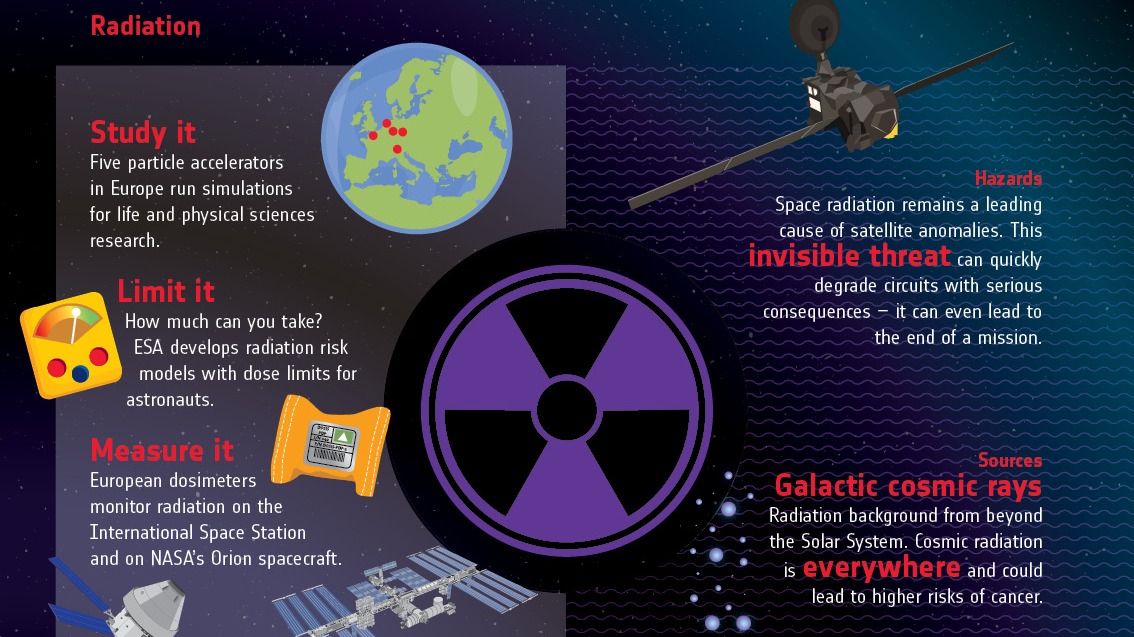Given the intended future of human spaceflight as missions explore beyond of low-Earth orbit (LEO) to destinations such as the Moon and Mars, there is a pressing need to improve upon the understanding of the local space radiation environment and associated risks. Long-term exposure to the continuous GCR flux can compromise the astronauts' health, lead to cumulative degradation and cause stochastic failures of electronics. Appropriate computational tools exist to simulate the interaction of radiation with different mission components. In addition to this, numerous radiation monitors have been flown on spacecraft beyond LEO. Gathering in-flight data over representative time spans, these provide much needed insight in the varying radiation conditions in the solar system, generally referred to as space weather. In preparation of space missions it is regarded as very advantageous to be able to test critical mission components before deployment. Scientific instruments, dosimeters, detector systems or electronics can be calibrated in a ground-based laboratory environment or through simulation. As mission components and astronauts will be exposed to very different circumstances beyond LEO than the relatively safe near-Earth environment, characterization of the space radiation environment and the response to it becomes of increasing importance. The amount of Earth-based analogs (such as dedicated accelerator facilities) able to mimic the specific radiation conditions encountered in space is fairly limited. The current CERN-based activity CHIMERA will focus on irradiation with primary Pb ion beams for electronics and detectors, meeting the needs for European space radiation research and testing. Beam characterization is planned for the coming years which will be focused on providing an Earth-based laboratory environment for addressing space radiation effects.

